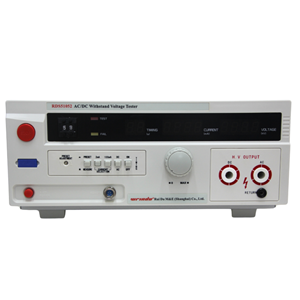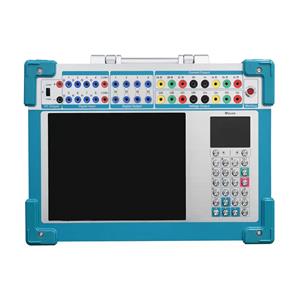Do you really understand AC impedance and DC impedance?
Measurement of DC Internal Resistance and AC Internal Resistance
(1) Measurement of DC Internal Resistance
The principle of DC internal resistance measurement is based on Ohm's law. In order to get the internal resistance of the battery, we need to measure the output voltage and current of the battery. The specific operation steps are as follows:
First, charge (or discharge) the battery (or electrode) to a specific SOC/SOD state and let it rest for 1 hour to reach equilibrium. During this time, the voltage V0 of the cell is recorded.
Next, a small constant current (usually less than 0.5 C) and a short duration (typically a few seconds) pulse Ip (charging or discharging) is applied to the measurement system. At the same time, the voltage change Vt at this point is recorded.
Using Ohm's law, we can calculate the DC internal resistance of the battery based on the formula R = (V0-Vt)/Ip.
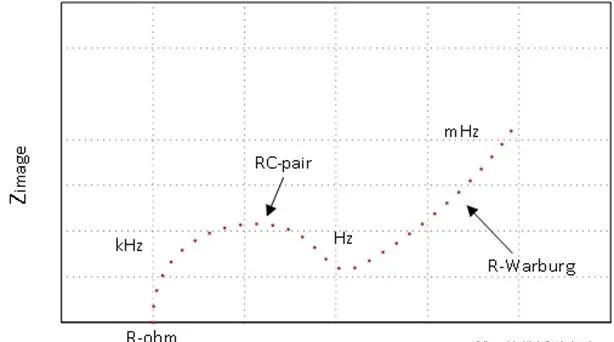
(2) AC internal resistance measurement
The testing process of AC internal resistance is relatively complicated. The basic principle is to inject sinusoidal current signals into the positive and negative terminals of the battery, and detect the sinusoidal voltage signals obtained at both ends. Through these signals, we can deduce the AC impedance of the battery.
In contrast to the AC impedance spectrum, where the AC internal resistance is the impedance tested at a specific frequency, the impedance spectrum is the impedance tested at a range of frequencies. Thus, the AC impedance spectrum consists of a number of impedance points at different frequencies, which are usually presented graphically as semicircles and straight lines. AC internal resistance, on the other hand, is actually a specific point in the AC impedance spectrum.
In conclusion, both DC internal resistance and AC internal resistance measurements have their own unique principles and operations. DC internal resistance is relatively simple to measure and is based primarily on Ohm's law. AC internal resistance, on the other hand, requires the injection and detection of a sine wave signal from which the corresponding impedance value is obtained.
Meaning of DC internal resistance and AC internal resistance
The internal resistance of a battery may be a parameter full of mystery for non-specialists. But in fact, it represents the various resistances inside the battery, which affects the performance of the battery. Today, we will briefly talk about DC impedance and AC impedance to demystify the internal resistance of batteries for you.
(1) DC impedance: the "total resistance" inside the battery
Imagine that when you try to push an object, all the resistance it receives adds up to the force you need to overcome. The same is true for DC impedance, which is actually the sum of all the resistance inside the battery.
In our tests, we measure it by discharging or charging the battery at a constant current for a short period of time. This is like applying a force to the battery for a split second and observing the change in its voltage. The ratio of this change to the current gives the DC internal resistance.
This resistance includes the various ohmic resistances, interfacial impedances, charge transfer impedances, and diffusion impedances within the battery. Yes, you heard it right, DC internal resistance actually includes all the impedances in the battery.
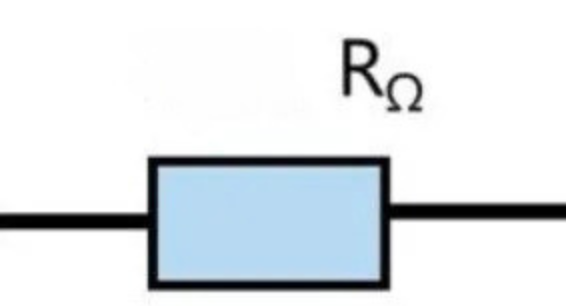
2) AC Impedance: "Ohmic Internal Resistance" at High Frequency
Unlike AC impedance, which is measured by applying alternating AC current or voltage to a battery, AC impedance is only an ohmic internal resistance RΩ when the current frequency is high.
Interestingly, when the current frequency is very high, the measured AC internal resistance is simply an ohmic internal resistance RΩ. Because the capacitor has a characteristic: through the high frequency, blocking low frequency. At this high frequency, the capacitor acts as a pathway, so all other impedances are gone, leaving only the ohmic internal resistance.
From the electrochemical point of view, under high frequency current, lithium ions do not move too far in a short time, like doing a small "step" in place. As a result, the charge does not build up and the distribution does not change. As a result, there is no electrochemical polarization or concentration polarization, and naturally there is no impedance.
So, in simple terms, the AC internal resistance at high frequencies is the ohmic internal resistance RΩ, but remember that this only holds true at higher AC frequencies.
AC Internal Resistance vs. DC Internal Resistance Explained in Depth
Both AC internal resistance and DC internal resistance are expressions of the internal resistance of a battery, and there is a relationship between them. In terms of impedance components, DC internal resistance contains all the impedances inside the battery, including ohmic resistance, interface impedance, charge transfer impedance, and diffusion impedance. And the AC internal resistance, especially at high frequencies, mainly represents the ohmic internal resistance. Therefore, usually, the value of AC internal resistance will be smaller than DC internal resistance.
Further studies point out that at lower current frequencies, a linear relationship is observed between AC internal resistance and DC internal resistance. This means that under specific low-frequency conditions, we can indirectly obtain the value of DC internal resistance through the measurement of AC internal resistance, and use the AC internal resistance at low frequency as an alternative measurement of DC internal resistance. This finding provides more selectivity and flexibility for the measurement of battery internal resistance.
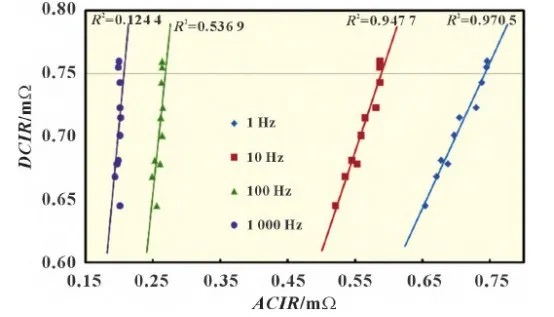
Reasons for choosing AC internal resistance in battery sorting
Why do we usually choose to measure AC internal resistance instead of DC internal resistance in the production and development of batteries? There are several reasons:
Efficiency considerations: DC internal resistance is relatively complex and time-consuming, while AC internal resistance is faster and more convenient. A large number of cell samples are usually evaluated during the battery sorting session, so choosing AC internal resistance testing can significantly improve efficiency.
Cost considerations: DC internal resistance testing usually requires a large amount of charging and discharging equipment, which undoubtedly increases the cost of testing and production. In contrast, AC internal resistance testing requires relatively simple equipment, which reduces costs.
Relevance: Although AC internal resistance only represents the ohmic internal resistance of the battery, its linear relationship with DC internal resistance makes it possible to indirectly evaluate the overall impedance of the battery through AC internal resistance.
In summary, considering the efficiency, cost and correlation between the two, AC internal resistance is usually chosen as the evaluation parameter in battery sorting.


